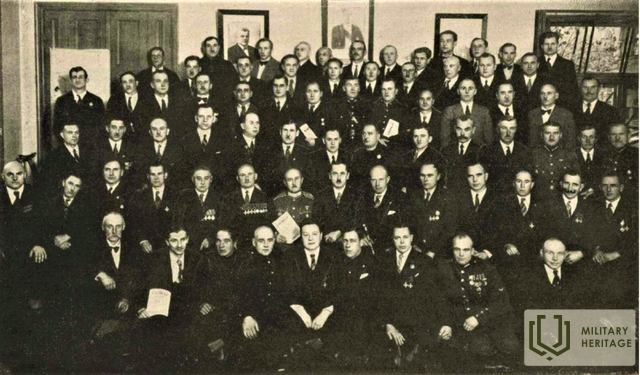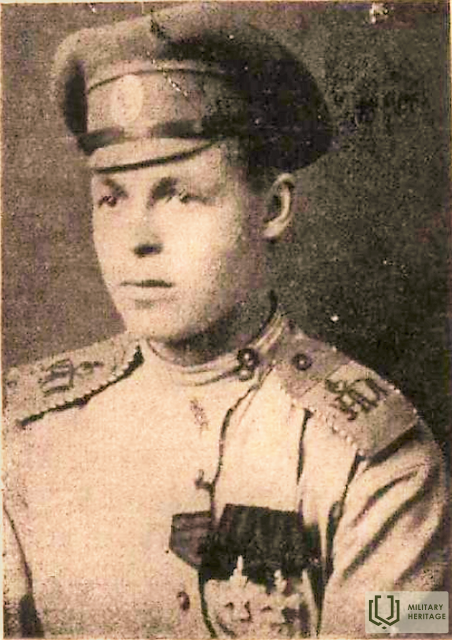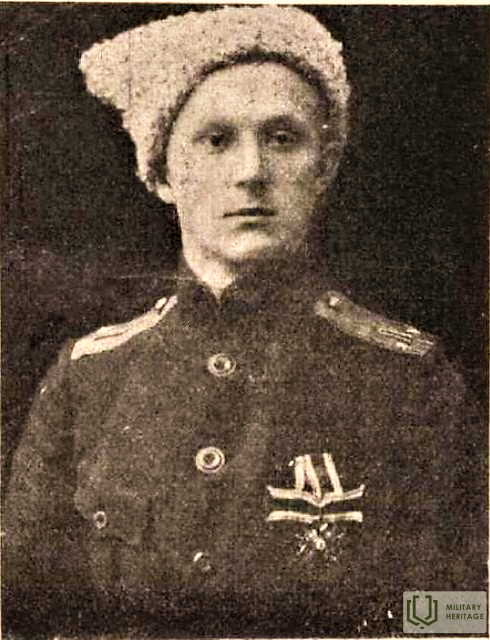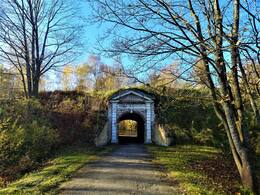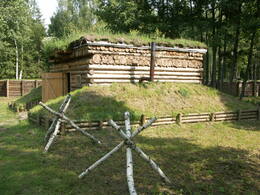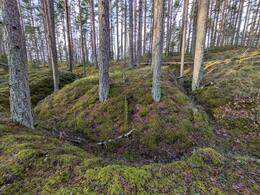1. Daugavgriva Latvian Riflemen Regiment I WW1

At the beginning of the First World War, Latvian officers repeatedly turned to higher-ranking Russian military institutions with proposals to create Latvian national military formations as part of the Russian army. However, these initiatives were rejected. At the end of 1914, two battalions of the joint labor ornaments of the Daugavgrīva Fortress National Guards were formed in the Daugavgrīva Fortress. The successful operation of the Latvian National Guard in the battles for the defense of Jelgava in May 1915 again raised the issue of the establishment of Latvian national formations. In the autumn and winter of 1915, both battalions of the National Guard were used to form Latvian rifle units.
The formation of the National Guard in the Russian Empire during the First World War was carried out according to the mobilization regulations approved in 1910. Men between the ages of 21 and 42 who had been discharged from the regular army were drafted into the National Guard. The National Guard was primarily intended for the rear service - the guarding of military and strategic engineering objects, the service of fortresses and city garrisons, as well as the replenishment of regular army units. The National Guard often used it in the construction of military facilities. For this reason, special work ornaments were even formed without arming them.
For the needs of Daugavgrīva Fortress, 13 national guard work ornaments were distributed. In the autumn of 1914, the ornaments of the Daugavgrīva National Guard were mainly employed in the construction of positions around the fortress. From the end of November 1914, intensive military training began to compensate the eight armed ornaments of the National Guard to make up for the lack of regular army units.
The formation of the first of the eight Latvian rifle battalions began in August 1915. It was given the name of Daugavgrīva. This was not an accident, as the Daugavgrīva fortress had become the home of Latvian units. Two battalions of the National Guard were formed from the working ornaments of the fortress garrison, in which the absolute majority were Latvians, who took part in the battles against the Germans in Kurzeme and Northern Lithuania in the spring of 1915. Assistant Commander of the Fortress K. Baltiņš was the Commander of the First Rifle Battalion and served on the Latvian Riflemen's Organizing Committee.
The first rifle battalions were formed in a great hurry. The front was located near Riga and the German attack could start at any moment. There was a lack of space for clothing, clothing and equipment. The rifles also received their weapons late. The 1st Daugavgriva Latvian Rifle Battalion received weapons a month after its establishment, but the uniforms and harness even later. There was also a lack of experienced instructors and officers. Without weapons and sufficient command staff, the training process was difficult. This caused unrest among both riflemen and officers. Training was also hampered by the frequent arbitrary absence of riflemen.
In general, it must be admitted that the work of the Latvian Riflemen's Organizing Committee was admirable. In a short time, under very difficult conditions and without previous experience, several combat-capable battalions had been formed. It was a great success and a testament to the self-organization of Latvian society.
In November 1916, all Latvian rifle battalions were renamed regiments.
More information sources
1. Šiliņš J. "Latvian Riflemen". National Encyclopedia. https://enciklopedija.lv/skirklis/31625-latviešu-strēlnieki [accessed 29.10.2021].
2. Dedumietis D. "Daugavgrīva Fortress National Guard Joint Work Battalions". National Encyclopedia. https://enciklopedija.lv/skirklis/58908-Daugavgrīvas-cietokšņa-zemessargu-apvienoto-darba-rotu-bataljoni [accessed 29.10.2021].
3. The blizzard of souls. Digital Museum. Available: https://www.dveseluputenis.lv/lv/laika-skala/notikums/74/pirmo-latviesu-strelnieku-bataljona-formesana/ [accessed: 29.10.2021.].
Related timeline
Related objects
Daugavgrīva Fortress
Daugavgrīva Fortress (entry from Birzes street) is located on the Daugavgrīva Island where Buļļupe river joins the Daugava river. The fortress was built in the 17th century to defend from enemies moving in the direction of Riga, which was an important administrative, trade and production centre. Later it became the main fortification of the Latvian Army coastal defence with several support points. This defensive fortification system is one of the most valuable objects of Latvia's military heritage. This fortress has witnessed Latvian military history. For example, during the Crimean War (1853-1856) Latvian and Estonian gunboat crews were trained here. The main objective of these units was to protect local ports and the coast from attacks by the British navy. During World War I Daugavgrīva militiamen companies were formed here. These were the first Latvian combat units, which came even before the Latvian Riflemen. Nowadays it is possible to see the territory of the fortress. ‘Komētforts’ and the Seaside Nature Park are located nearby and Mangaļsala fortifications are on the other side of the Daugava river.
Christmas Battle Museum
The museum is located in “Mangali” house, Valgunde Ru ral Territory, Jelgava Municipality, and it is a branch of the Latvian War Museum. It was unveiled in 2005 at the site of the Christmas Battles that occurred during World War I. Unique World War I fortifications still remain at the battle sites. The open-air exhibition of the Christmas Battle Mu seum reconstructs a section of the fortification system – the trench shelter and part of the first line of German defence – the “German rampart”, which is the only object of this kind in the Baltic states. The Christmas Battles are one of the best known and most dramatic events of World War I in Latvia. They are an event of special importance in Latvian military and cultural his tory. Intense fighting took place for six days, leading to heavy casualties. The battles are mainly associated with the attack of Latvian Riflemen against the German Army units, which took place in particularly severe and unfa vourable winter conditions. This is an unprecedented case of a major combat operation launched without artillery support. Today, the museum artefacts found at the sites of the bat tle are on display. The indoor exhibition is open at certain times, while the exhibition of outdoor fortifications is open every day. Tourist routes and nature trails have been cre ated in the surrounding area.
Nordeķi – Kalnciemas dune ridge
The approximately 30 km long dune ridge, which can be traced in nature from Iļģuciems (with minor interruptions) to Tīreļi today, is one of the most impressive landforms of the Seaside Lowlands, which is rarely perceived as a single natural formation. The dune was formed on the shores of one of the last Baltic glacial lakes, as the waters of the Baltic glacial lake receded. The dune ridge consists of two parallel 50–100 m wide dune belts. They are usually 6–10 m high, but their highest points reach 16–19 m above sea level. In the vicinity of Kleisti, Imanta and Beberbeķi, the beautiful pine forests covering the dunes are a popular place for walking, recreation and sports, and in winter - cross-country skiing. The part of the dune in the vicinity of Lāčupīte is associated with the events of the Bermontiades. On the dune in Pārdaugava is the Lāčupe or Lācaras cemetery . Between Pinkie and Babīte, the Beberbeķi Nature Park has been established to preserve the dunes. The western part of the Nordeķi-Kalnciemas dune ridge, approximately 10 km long, is called the Long Dune . Near the Long Dune (south of Trenči) is the Antiņi Brothers Cemetery , the Latvian Riflemen's Hospital medicine warehouse , and the renovated Latvian Riflemen's dugouts . South of the Long Dune is a massif of swampy forests and marshes, including Rāvājs and Maztīrelis . Opposite Maztīrelis is Ložmetējkalns with a viewing tower and a resting place and the so-called German rampart section . Even further west, near the Long Dune are the Latvian Riflemen Brothers Cemetery and the Piķi Brothers Cemetery. With greater or lesser interruptions, trenches are visible almost along the entire Nordeķi-Kalnciemas dune ridge. In the southwestern part of the Long Dune – in the swampy forests that adjoin it from the south, bomb craters from the First World War are visible. Along the entire length of the Long Dune (south of it), small forest paths run, suitable for walks and longer hikes – a great opportunity to explore the sites of the First World War battles.
Related stories
About Daugavgriva fortress
The narrator describes an event in the Daugavgrīva fortress during World War I, when it was bombed by an air force in the German army. The fortress was one of the strategic objects that remained important until the end of World War II.




